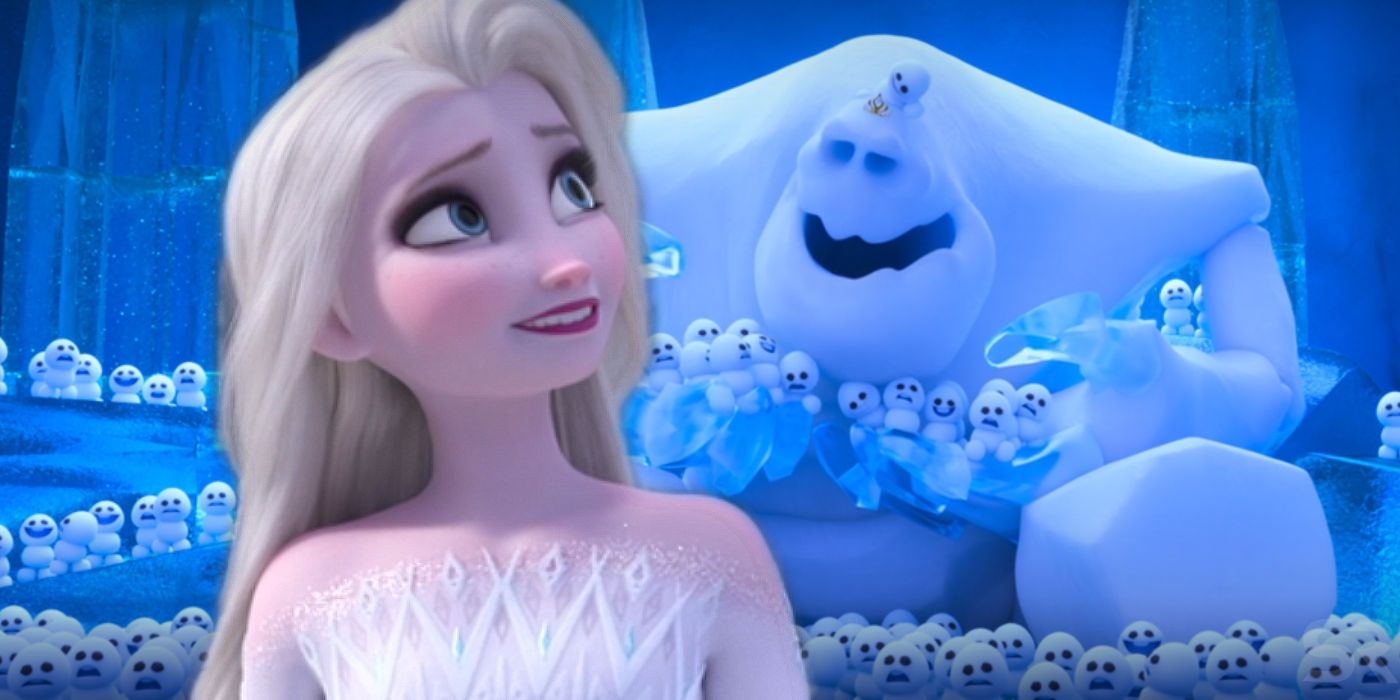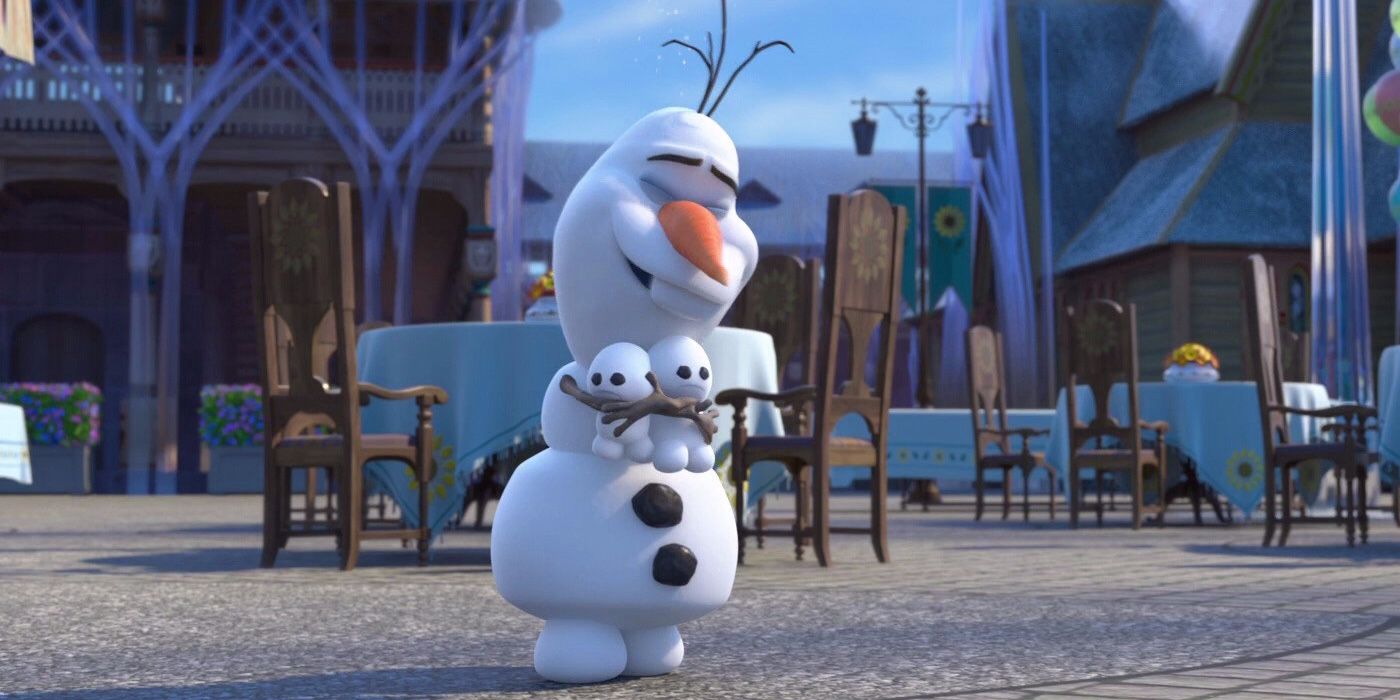
The Frozen 2 post-credits scene introduces a plot hole when Olaf (Josh Gad) is seen relating the movie's story to Elsa’s (Idina Menzel) other snow creations, Marshmallow (Paul Briggs), the snow-monster from Frozen, and the Snowgies from the Disney short, Frozen Fever. When Elsa freezes into solid ice after traveling too far into the depths of Ahtohallan, Olaf dies along with her since he is a product of her magic and only returns when Elsa physically brings him back to life using her powers at the end of the film. Since all of Elsa’s creations disappeared upon her death, Marshmallow and the Snowgies’ reappearance in the post-credits scene suggests Elsa recreated them, but why would Elsa go out of her way to bring them back?
In Frozen 2, after Elsa and Anna (Kristen Bell) lift the curse over the Enchanted Forest by exposing their grandfather King Runeard’s treachery and destroying the dam he built to deplete the Northuldra people’s resources, there is one thing left to restore at the end of the movie: Olaf. When Elsa brings Olaf back to life, the wind spirit nicknamed “Gale” gathers the snowflakes that were once Olaf and carries them on the wind back to Elsa. Because water in the Frozen franchise retains memory, Olaf is brought back with his personality and his memories of the past two Frozen films intact. When Olaf recaps the events of Frozen 2 to Marshmallow and the Snowgies in the post-credits scene, it’s implied that they must have been resurrected by Elsa in a similar manner, but why does Elsa bother to bring back creations whose existence was not only an accident, but a painful reminder of her former inability to control her powers?
Both Marshmallow and the Snowgies are representations of a time when Elsa was still struggling to control her elemental magic. When Anna visits Elsa’s Ice Palace in Frozen and informs her that Arendelle is encased in an eternal winter, Elsa becomes fearful that she won’t be able to return the kingdom back to normal; she then accidentally strikes Anna's heart with her ice magic and creates Marshmallow out of panic to escort Anna off the premises. In Frozen Fever, a short which follows Elsa as she tries to throw Anna a birthday party despite having a bad cold, Elsa accidentally creates the Snowgies every time she sneezes. While each of her snow creations end up being innocuous, with Marshmallow acquiring a jollier disposition once his guard duties are finished in Frozen and the Snowgies only causing minor mischief at Anna’s party, it doesn’t seem plausible that Elsa would bring them back since they're a reminder of her worst fear: losing control of her powers.

While Elsa’s other snow creations may not have a positive connotation for Elsa herself, one reason she may have extended the effort to bring back Marshmallow and the Snowgies after they flaked away like Olaf may be because of Olaf himself. During Frozen Fever, as Elsa sneezes the little snow people into existence one after the other, Olaf grows attached to them, hugging them tightly and referring to them as "little brothers." At the conclusion of the short, Olaf even escorts them up to Elsa’s Ice Palace to live with Marshmallow, calling off each of their names as they enter the palace. Since all of Elsa’s snow creatures have the same creator in common, Olaf appears to consider the Snowgies and Marshmallow to be his siblings, which may explain why Elsa would bring them back for Olaf’s sake.
Alternatively, Elsa may have resurrected her snow creatures because they’re a reminder of her conflicted relationship with her powers. Memory plays an integral role throughout Frozen 2, and is essentially the catalyst that lifts the curse over the Enchanted Forest after Elsa travels to Ahtohallan and views the memory of her grandfather’s betrayal against the Northuldra people. Although each of Elsa's snow creatures represents a low point in her life, with Marshmallow representing a time when Elsa's magic injured Anna and the Snowgies Elsa’s guilt over robbing Anna of a happy childhood due to her magic, Elsa’s own experience learning about her grandfather’s history has taught her that ignoring the past doesn’t make it go away, and her painful past was a stepping stone on her journey of self-discovery.
from ScreenRant - Feed https://ift.tt/2BdzXlm



0 Comments